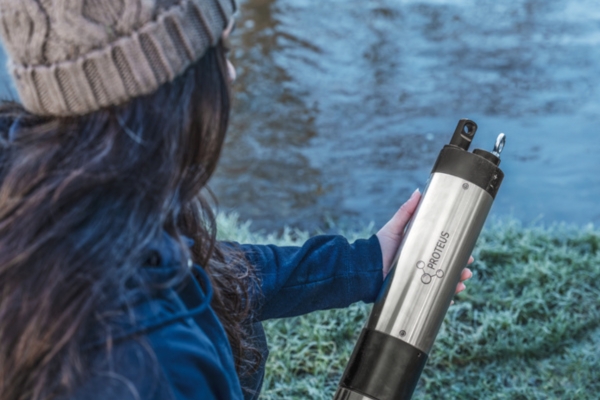Proteus Water Quality Sensor a Game Changer for Clean Water Management
A trial installation of a new Proteus multi-parameter sensor, able to measure organic pollution including E. coli, into the Meola Creek in Auckland, has the potential to be a game changer for environmental monitoring in New Zealand.

The multi-party initiative, involving Watercare, Auckland Council and Mt Albert Grammar School will see a Proteus E. coli sensor providing real-time reporting on water quality in the Meola Creek 24/7, and alerting stakeholders to any hazardous levels of microbial contamination in the waterway, as well as other important indicators of waterway health.
The world-leading Proteus multi-parameter water quality sensor is able to monitor coliform bacteria in addition to other significant parameters including temperature, pH, conductivity, turbidity, biological oxygen demand (BOD), and chemical oxygen demand (COD).
BOD is a key indication of the degree of organic pollution in water bodies because it measures the quantity of dissolved oxygen that microorganisms need to decompose organic materials in water. Contrarily, COD is a measurement of the quantity of oxygen necessary for the chemical oxidation of organic matter in water and is a key marker of the concentration of both organic and inorganic contaminants in the water.
In situ testing of the Proteus sensor in the UK has shown high accuracy in categorising water quality when matched against laboratory data.

With the Proteus Water Quality Probe we’re going to be able to monitor rivers, beaches and estuaries in real-time to a high degree of accuracy, and report actual levels of dangerous bacteria as they happen
This is an important test case for the sensor. Referred to as Waitītiko by local Māori, the Meola Creek flows for approximately 5.2km from Mt Albert to Point Chevalier. With a catchment of approx. 20km2, it is the largest single catchment in the Auckland isthmus.

Meola Creek however, is in poor ecological condition, subject to contaminant inputs such as heavy metals, including zinc and lead and microbiological indicators such as E. coli. As a result, the Meola Creek is now the focus of a wide-ranging set of initiatives to begin to restore the Waitītiko – the Proteus sensor is an important tool in measuring progress.
Macpherson says that the Proteus Water Quality Probe has been calibrated for New Zealand conditions and integrated with the Adroit Platform. Data is uploaded to the platform via the Spark Cat-M1 network where it is made available to all stakeholders.
Monitoring parameters of the Proteus Water Quality Sensor can include:
- Coliforms (faecal, E. coli, total)
- BOD, COD, TOC, DOC
- Dissolved Oxygen Pressure
- pH
- Temperature
- Optical Brighteners
- ORP / REDOX
- Coliforms (faecal, E. coli, total)
- Tryptophan
- Refined Oils
- EC / Salinity / TDS
- Turbidity
- Crude Oils CDOM
For more information, see:
Proteus Multi-Parameter Water Sensor for Coliforms (E. Coli) Monitoring
